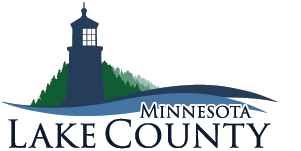Stream Restoration
Stewart River Restoration
The Stewart River is a state protected water and a Designated Trout Stream. In 2010, it was identified as a high priority watershed during the update of the Lake County Water Management Plan. The river empties into Lake Superior near the drinking water intake for the City of Two Harbors.
Lake SWCD is currently working on multiple projects within the Stewart River watershed. These projects include stabilizing bank erosion using natural materials, realigning the river channel along 4500 feet of stream, and working with many project partners.
Our largest project improved 4500 feet of the Stewart River, seven miles upstream of Lake Superior. This project, the Stewart River Stabilization and Habitat Improvement Project, used Natural Channel Design methods that were established by geomorphologist Dave Rosgen. Natural Channel Design restores channel form, creates fish habitat, reduces erosion, and reestablishes native vegetation in the riparian corridor. This work took place during summer 2015.
Our Goal For The Stewart River Stabilization and Habitat Improvement Project:
“Lake SWCD along with our project partners will work to restore the ecological and geomorphic function of the stream by restoring stability and providing habitat diversity.”
This work was made possible by many funding sources and project partners! The Stewart River also received significant damage during the June 2012 flood. Lake SWCD is evaluating flood damage and seeking additional funds for stream restoration projects on the Stewart River.





Knife River Restoration
The Knife River is a state protected water and a Designated Trout Stream. It is nationally known as a prime fresh-water steelhead fishery and is managed as a cold-water trout fishery for native species including brook trout. The Knife River is characterized by steep gradients, multiple water-falls and cascades, tea-colored water, and remnant old-growth forest cover types including white pine, Norway pine and white cedar. For all its attributes, the Knife River does not meet water quality standards for sediments and turbidity.
In 2013 bank erosion surveys were conducted to quantify the sediment entering the river from eroding banks. From this data a priority list of banks was created. One of these banks was addressed with a bank stabilization project in 2014. This project used toe-wood methodology to create a floodplain bench. This bench was created from all natural materials–tree trunks, root wads, brush, soil, and willow. This floodplain bench will reduce erosion from the stream bank, create fish habitat, and provide native vegetation along the river corridor. Another project using similar methods will be completed downstream on the Knife River in 2015!
Visit the Knife/Hawk Hill panorama and the 3D point cloud data.
Work on the Knife River is funded by the Clean Water Fund of the State of Minnesota and by the Great Lakes Commission.



East Branch Beaver River

The East Branch of the Beaver River Restoration and Habitat Enhancement project (47°16’40.02″N, 91°19’0.39″W) is located adjacent to the Silver Bay Golf Course, upstream of where the river runs through the golf course. This site experienced increased erosion and habitat degradation during the June 2012 flood. This site is on public land owned by the City of Silver Bay, and the de-stabilized conditions at the site have the potential to affect infrastructure and recreational elements of the Silver Bay Golf Course if left unaddressed.
The Environmental Assessment Worksheet has been submitted to the Environmentay Quality Board and will be publichsed in the EQB on May 8, 2017. The EAW and supporting documentation can be found below at these links:
East Branch, Beaver River Planset, June 20, 2017
Phase One Archeological Report – East Branch Beaver River
East Branch, Beaver River EAW Document
East Branch, Beaver River EAW Construction Site Plans
East Branch, Beaver River EAW Attachments and Figures One and Two
